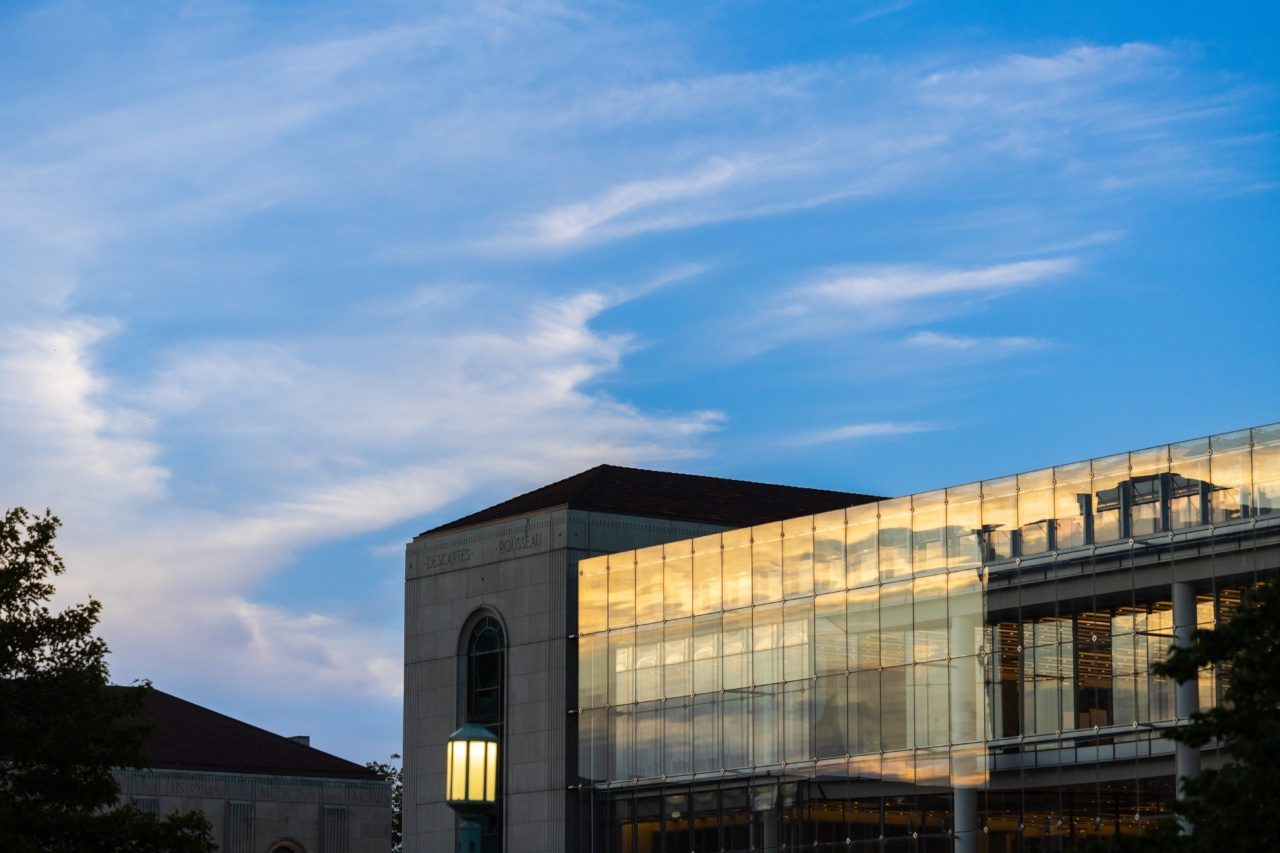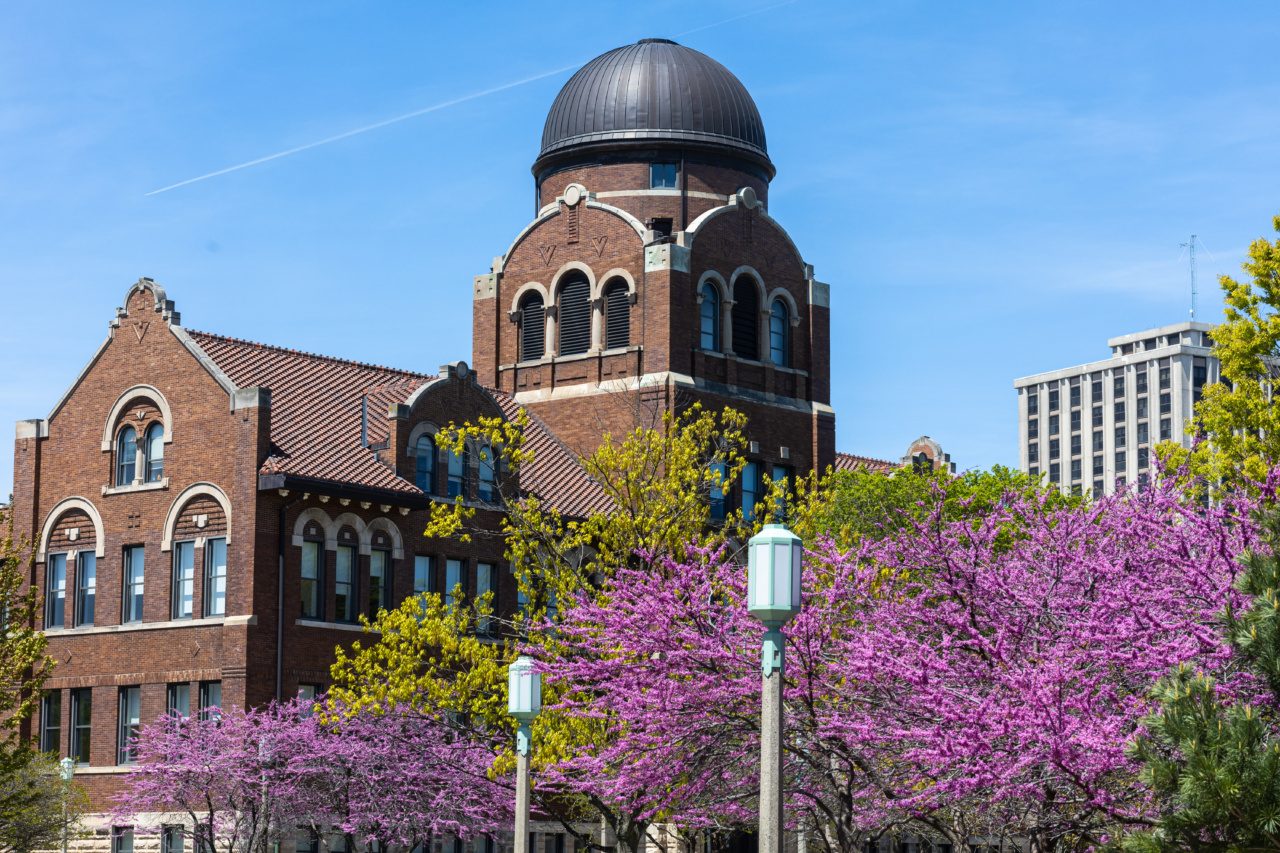
Traveling sculpture makes a temporary landing on Loyola’s campus
The first thing that blows you away is the size of it—almost four tons of chiseled bronze, stretching 20 feet long. Then it’s the intricacy of the design. Rendered are 140 refugees tightly packed on a skiff, hailing from everywhere and across time: a Polish woman fleeing communism, an African slave, a Cherokee man walking the Trail of Tears, an Irish boy eluding a potato famine, a man holding a Torah escaping Nazi Germany. They stand shoulder to shoulder, their eyes searching for a more stable and fulfilling future. A pair of angel wings burst from the center of the scrum.
Angels Unawares arrived at Loyola University Chicago on September 3 and will rest for six weeks outside the Damen Student Center, on the Lake Shore Campus. A week after the statue’s arrival, on September 11, the University will host a special Mass with Chicago archbishop Cardinal Blase Cupich at Madonna della Strada Chapel, calling attention to the plight of migrants and refugees worldwide.
“Be not forgetful to entertain strangers: for thereby some have entertained angels unawares.”
— Hebrews 13:2
The original piece was commissioned by Pope Francis and completed in 2019 by the figurative artist Timothy Schmalz. It was the first sculpture added to the Vatican’s famed St. Peter’s Square in 400 years. Schmalz made two castings and felt strongly that a replica should find a home in Washington, D.C. He approached the Catholic University of America last year and proposed they send Angels Unawares on a national tour before installing it permanently on their campus. They agreed.
Loyola is the last spot on that pilgrimage.
James Prehn, S.J., Loyola’s vice president and chief of staff, saw the original on his last visit to the John Felice Rome Center. He found it dignified and epic in scale.
“To have the angel wings coming out of the center of that group, all huddled together on a boat, is just very evocative,” he says.
Schmalz describes his work as a visual prayer and drew inspiration from Hebrews 13:2: “Be not forgetful to entertain strangers: for thereby some have entertained angels unawares.” The theme is nothing if not timely. “Loyola was founded to educate immigrants that nobody else would educate,” Prehn adds. “We should be able to see ourselves in the work.”



